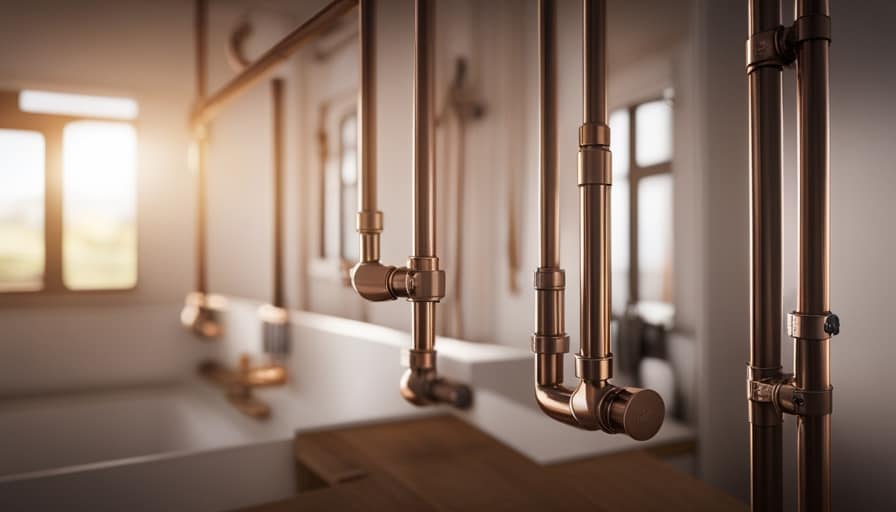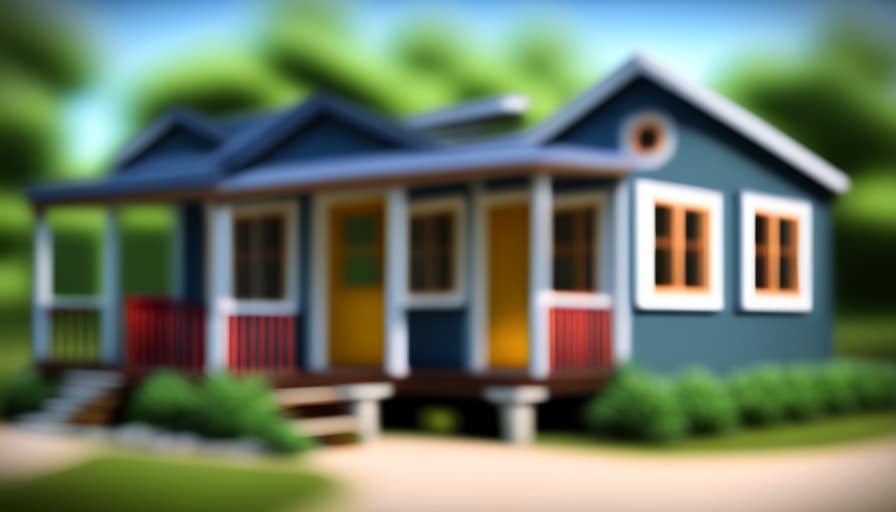I have uncovered the ultimate tips for fitting a kitchen, bedroom, and dining area into a small house. While it may appear challenging initially, with innovative ideas and clever design decisions, you will be surprised by what you can achieve.
Get ready to explore space-saving kitchen designs, innovative furniture options, and clever storage ideas that will transform your tiny house into a functional and stylish home.
Are you ready to make the most of every square inch?
Let’s dive in!
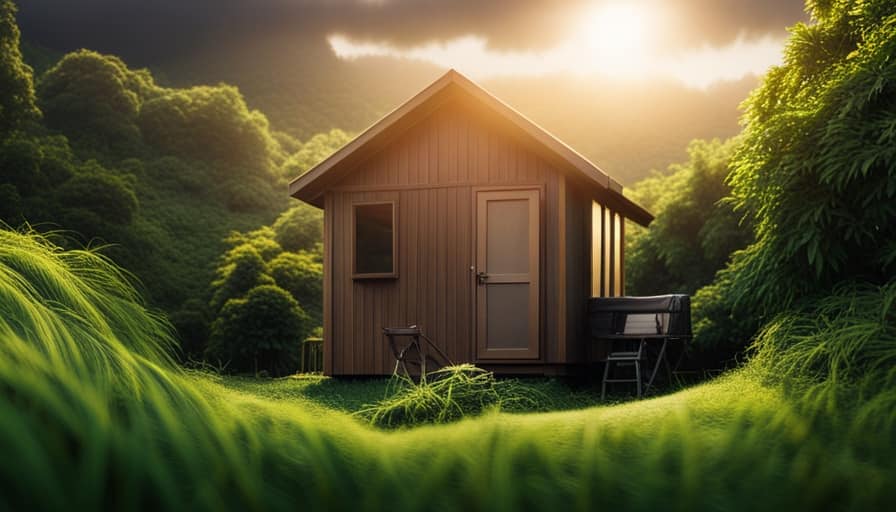
Key Takeaways
- Space-saving kitchen designs focus on compact appliances and hidden storage solutions.
- Creative bedroom solutions in tiny houses involve multipurpose furniture and maximizing vertical space.
- Maximizing the dining area in a tiny house involves investing in foldable dining table solutions and utilizing vertical storage options.
- Smart storage ideas for small kitchens in tiny houses include magnetic strips, vertical storage options, and utilizing hooks for hanging utensils.
Space-Saving Kitchen Designs for Tiny Houses
I love the space-saving kitchen designs for tiny houses. These designs aren’t only practical but also creative and efficient.
One aspect of these designs that I find particularly impressive is the use of compact kitchen appliances. These appliances are specifically designed to fit perfectly into small spaces without compromising functionality. From mini-fridges to slim dishwashers, these appliances make it possible to have all the necessary kitchen tools in a tiny house.
Another key feature of these designs is the incorporation of hidden storage solutions. Every inch of space is utilized, with cabinets and drawers cleverly hidden in unexpected places. For example, a countertop might double as a lid for storage underneath, or a pull-out pantry might be built into a narrow space.
These hidden storage solutions allow for a clutter-free and organized kitchen, making cooking and meal preparation a breeze in a tiny house setting.
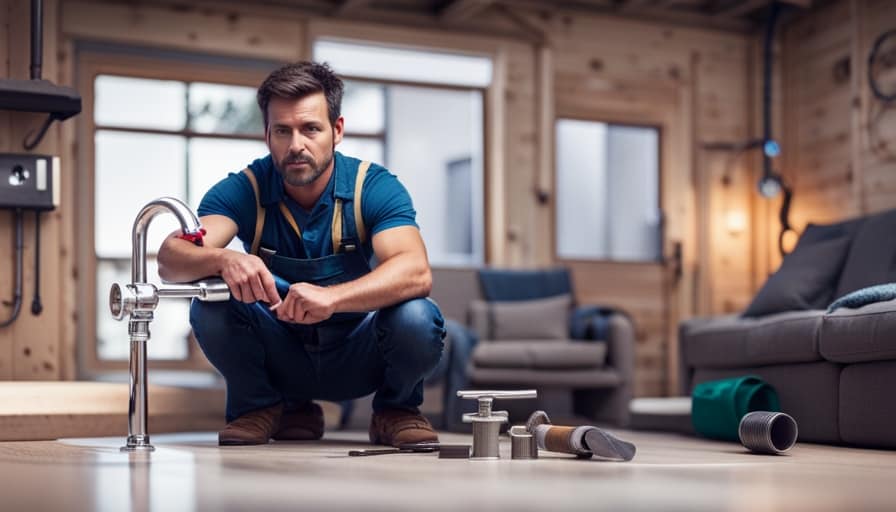
Creative Bedroom Solutions in a Compact Living Space
One common and effective solution for a compact living space is to utilize multipurpose furniture. In a small space, maximizing bedroom organization is crucial for creating a functional and comfortable living area. Small space design requires innovative solutions that make the most of every inch available.
One way to achieve this is by incorporating furniture that serves multiple purposes, such as a bed with built-in storage or a desk that can also be used as a bedside table. Additionally, utilizing vertical space is key in small bedrooms. Installing shelves or wall-mounted storage units can help keep the room clutter-free and provide additional storage options.
Maximizing Dining Area in a Tiny House
By utilizing space-saving furniture and incorporating creative design solutions, you can maximize the dining area in a tiny house and create a functional and inviting space for meals.
One option is to invest in foldable dining table solutions. These tables can be easily folded and tucked away when not in use, freeing up valuable floor space in your tiny house.

Another way to maximize the dining area is by utilizing vertical space. Consider installing floating shelves or wall-mounted cabinets to store dining essentials such as plates, glasses, and cutlery. This not only saves space but also adds a stylish and organized touch to your dining area.
By incorporating these innovative solutions, you can make the most of your tiny house dining area and create an enjoyable dining experience.
Now, let’s move on to discussing smart storage ideas for a small kitchen in a tiny house.
Smart Storage Ideas for a Small Kitchen in a Tiny House
My favorite smart storage idea for a small kitchen in a tiny house is using magnetic strips to hold knives and other metal utensils, freeing up valuable drawer space. This clever solution not only keeps your knives easily accessible but also adds a stylish touch to your kitchen decor.
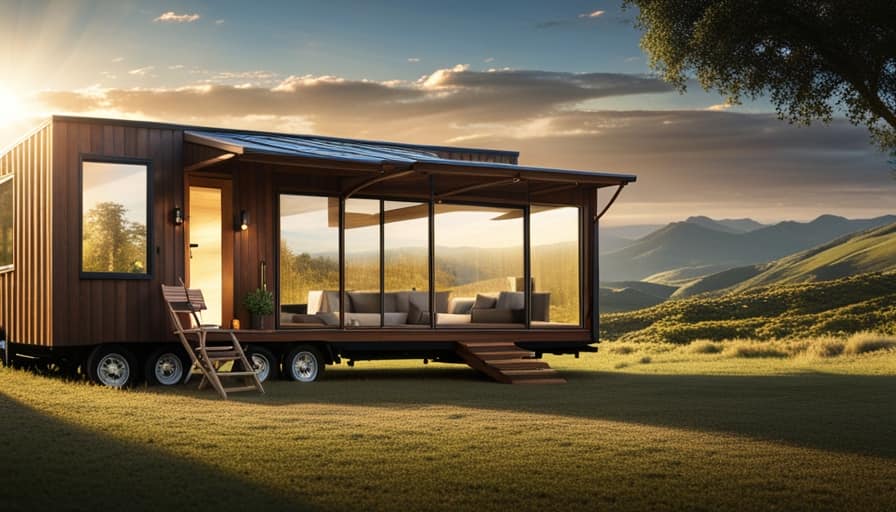
By mounting the magnetic strip on a wall or inside a cabinet door, you can maximize your kitchen organization while saving precious countertop space.
Another small space solution is using vertical storage options such as hanging baskets or shelves to store spices, pots, and pans. Utilizing every inch of available space is crucial in a tiny kitchen, so consider using hooks on the inside of cabinet doors for hanging measuring cups or kitchen utensils.
With these smart storage ideas, you can create a functional and efficient kitchen in your tiny house.
Innovative Furniture Options for Multi-Functional Living Spaces
I love how innovative furniture options allow me to create multi-functional living spaces in my tiny house. Transformable furniture solutions for small apartments have been a game-changer for me. These pieces of furniture are designed to serve multiple purposes, maximizing the limited space available. For example, a sofa can easily transform into a bed, providing a comfortable sleeping area at night and a cozy seating area during the day. Another great option is a coffee table that can be extended to become a dining table, perfect for hosting dinner parties in my small space.

In addition to transformable furniture, compact and efficient home office designs have also been a lifesaver. With more people working remotely, having a functional workspace in a tiny living space is essential. I have found that wall-mounted desks and foldable chairs are excellent space-saving solutions. These designs allow me to easily set up a home office when needed, and then fold everything away when I’m done, creating more space for other activities.
Here is a table showcasing some innovative furniture options for multi-functional living spaces:
| Furniture Option | Function | Space-Saving Feature |
|---|---|---|
| Sofa bed | Seating and sleeping area | Easily transforms from sofa to bed |
| Coffee table | Dining table | Extendable surface for dining |
| Wall-mounted desk | Workspace | Folds up against the wall for more space |
| Foldable chair | Seating | Compact and easy to store |
These furniture options have truly revolutionized the way I live in my tiny house. They allow me to make the most of every square inch, providing functionality and comfort without sacrificing style.
Frequently Asked Questions
What Are Some Tips for Maximizing Storage in a Tiny House?
To maximize storage in a tiny house, I focus on maximizing vertical space with built-in shelving and utilizing multi-functional furniture. I also implement creative organizing solutions, like using under-bed storage and hanging organizers.

How Can I Create a Separate Sleeping Area in a Small Living Space?
To create privacy and utilize vertical space, I suggest installing a loft bed or a Murphy bed in your small living space. This will separate the sleeping area and maximize the floor space during the day.
Are There Any Space-Saving Solutions for a Dining Area in a Tiny House?
There are numerous space-saving furniture options and creative storage solutions available for a dining area in a tiny house. These solutions help maximize functionality and efficiency, allowing you to enjoy meals comfortably in your small living space.
What Are Some Innovative Furniture Options for Multi-Functional Living Spaces?
Innovative furniture options for multi-functional living spaces include space-saving storage solutions and creative furniture designs. These solutions maximize limited space and offer practicality without compromising on style and comfort.
How Do I Design a Functional Kitchen in a Tiny House With Limited Space?
When designing a functional kitchen in a tiny house with limited space, it’s important to prioritize efficiency and organization. By carefully planning the layout and utilizing smart storage solutions, every inch can be maximized for cooking and dining needs.
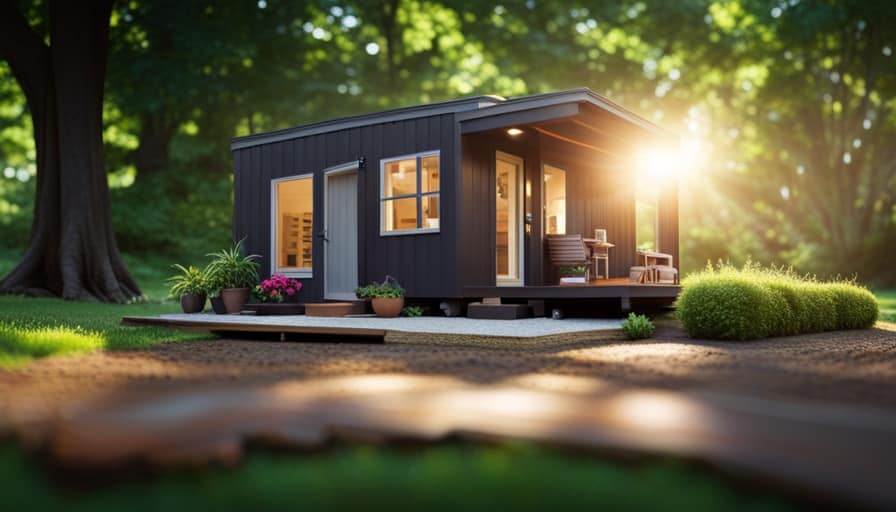
Conclusion
In the dance of design, tiny houses prove that size doesn’t limit creativity. From space-saving kitchens to innovative furniture, these compact living spaces are a testament to the power of intelligent design.
Like a symphony conductor orchestrating each element, homeowners find harmony in the arrangement of their kitchen, bedroom, and dining area.
With a touch of ingenuity and a dash of imagination, these tiny houses transform into a sanctuary where every nook and cranny serves a purpose.
I’m Theodore, and I love tiny houses. In fact, I’m the author of Tiny House 43, a book about tiny houses that are also tree houses. I think they’re magical places where imaginations can run wild and adventures are just waiting to happen.
While tree houses are often associated with childhood, they can be the perfect adult retreat. They offer a cozy space to relax and unwind, surrounded by nature. And since they’re typically built on stilts or raised platforms, they offer stunning views that traditional homes simply can’t match.
If you’re looking for a unique and romantic getaway, a tree house tiny house might just be the perfect option.
